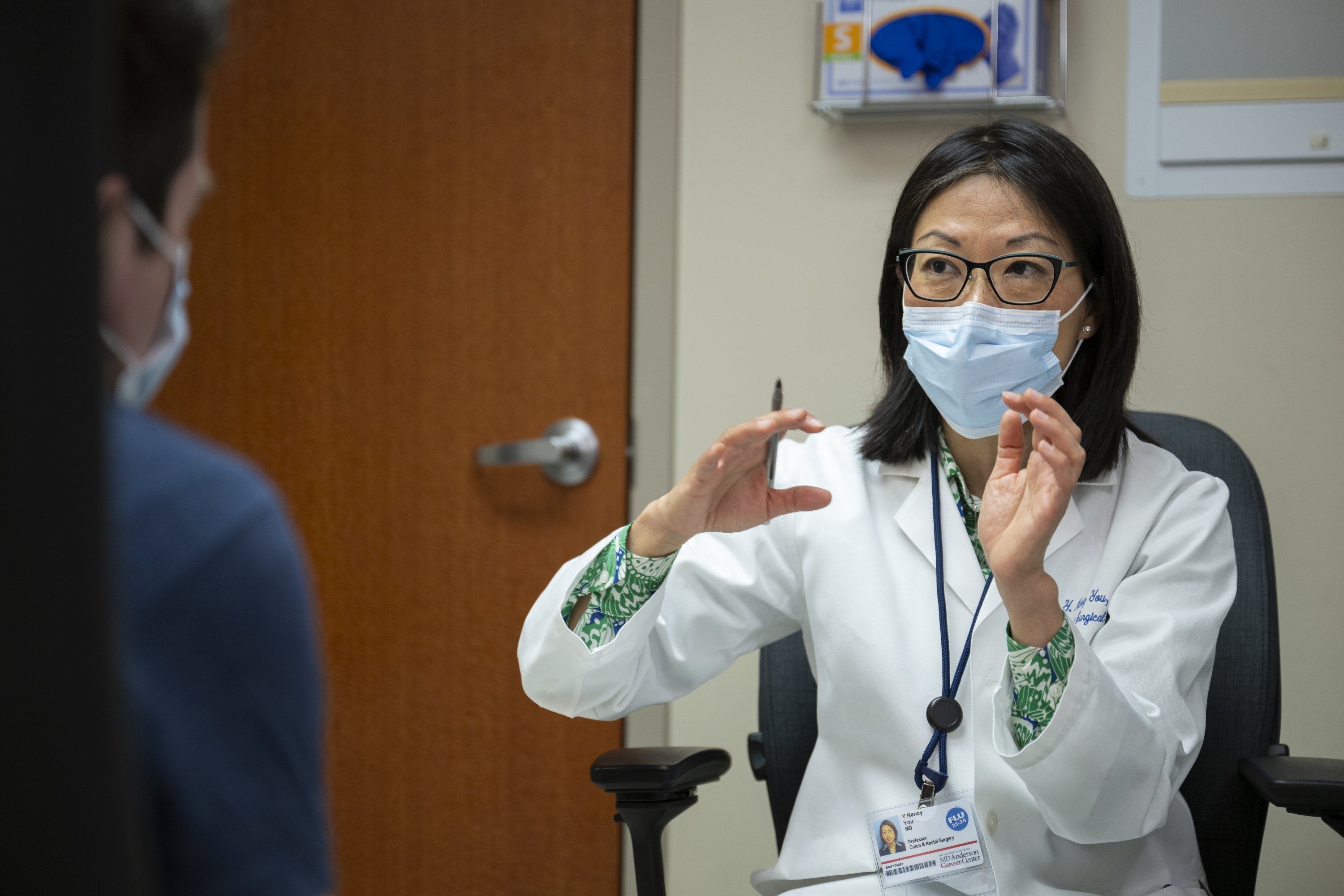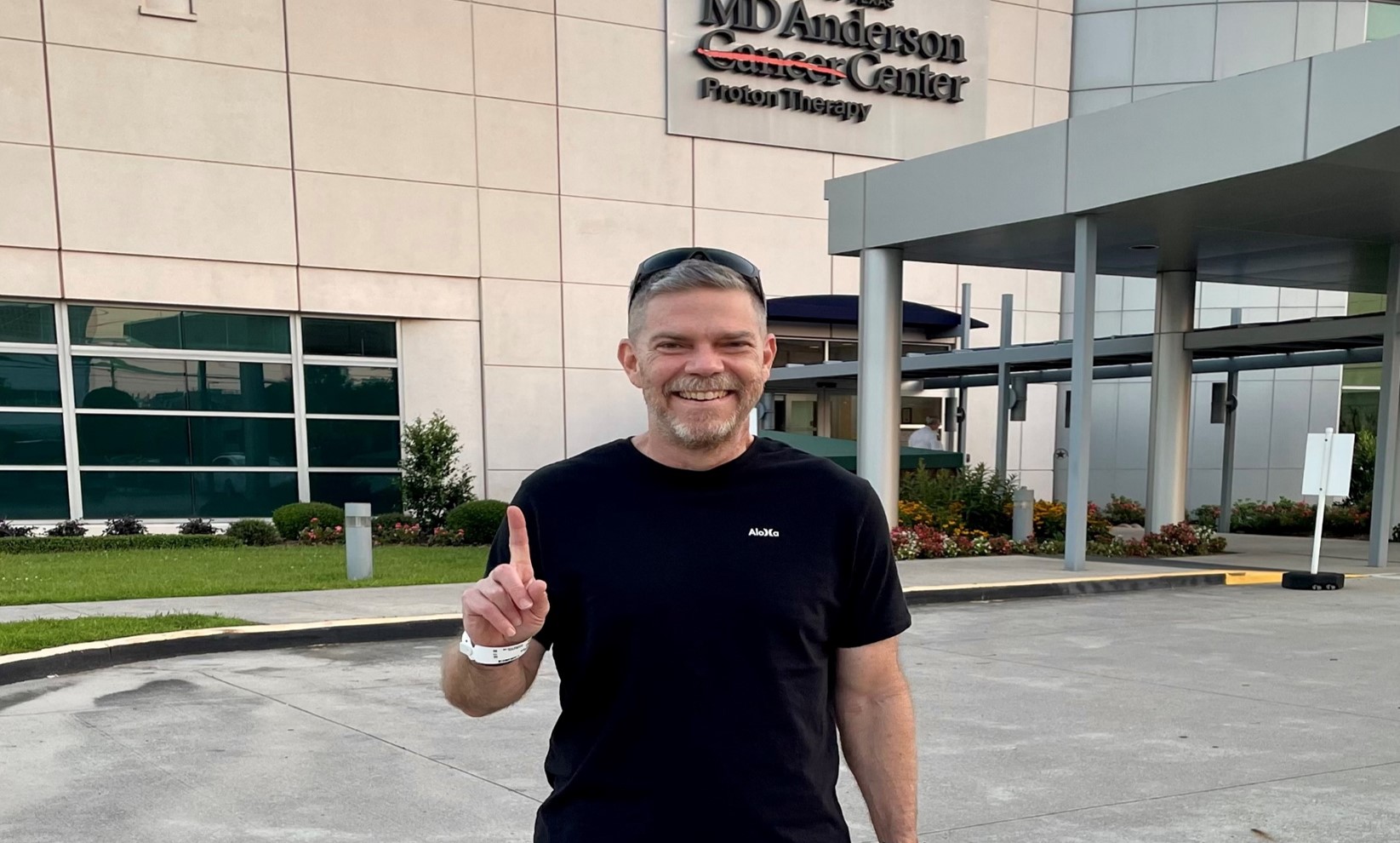- Diseases
- Acoustic Neuroma (16)
- Adrenal Gland Tumor (24)
- Anal Cancer (70)
- Anemia (2)
- Appendix Cancer (18)
- Bile Duct Cancer (26)
- Bladder Cancer (74)
- Brain Metastases (28)
- Brain Tumor (234)
- Breast Cancer (726)
- Breast Implant-Associated Anaplastic Large Cell Lymphoma (2)
- Cancer of Unknown Primary (4)
- Carcinoid Tumor (8)
- Cervical Cancer (164)
- Colon Cancer (168)
- Colorectal Cancer (118)
- Endocrine Tumor (4)
- Esophageal Cancer (44)
- Eye Cancer (36)
- Fallopian Tube Cancer (8)
- Germ Cell Tumor (4)
- Gestational Trophoblastic Disease (2)
- Head and Neck Cancer (14)
- Kidney Cancer (130)
- Leukemia (342)
- Liver Cancer (50)
- Lung Cancer (286)
- Lymphoma (278)
- Mesothelioma (14)
- Metastasis (30)
- Multiple Myeloma (100)
- Myelodysplastic Syndrome (60)
- Myeloproliferative Neoplasm (6)
- Neuroendocrine Tumors (16)
- Oral Cancer (102)
- Ovarian Cancer (178)
- Pancreatic Cancer (160)
- Parathyroid Disease (2)
- Penile Cancer (14)
- Pituitary Tumor (6)
- Prostate Cancer (150)
- Rectal Cancer (58)
- Renal Medullary Carcinoma (6)
- Salivary Gland Cancer (14)
- Sarcoma (238)
- Skin Cancer (300)
- Skull Base Tumors (56)
- Spinal Tumor (12)
- Stomach Cancer (66)
- Testicular Cancer (28)
- Throat Cancer (92)
- Thymoma (6)
- Thyroid Cancer (100)
- Tonsil Cancer (30)
- Uterine Cancer (86)
- Vaginal Cancer (18)
- Vulvar Cancer (22)
- Cancer Topic
- Adolescent and Young Adult Cancer Issues (22)
- Advance Care Planning (12)
- Biostatistics (2)
- Blood Donation (18)
- Bone Health (8)
- COVID-19 (360)
- Cancer Recurrence (120)
- Childhood Cancer Issues (120)
- Clinical Trials (628)
- Complementary Integrative Medicine (22)
- Cytogenetics (2)
- DNA Methylation (4)
- Diagnosis (238)
- Epigenetics (6)
- Fertility (62)
- Follow-up Guidelines (2)
- Health Disparities (14)
- Hereditary Cancer Syndromes (128)
- Immunology (18)
- Li-Fraumeni Syndrome (8)
- Mental Health (122)
- Molecular Diagnostics (8)
- Pain Management (62)
- Palliative Care (8)
- Pathology (10)
- Physical Therapy (18)
- Pregnancy (18)
- Prevention (936)
- Research (390)
- Second Opinion (78)
- Sexuality (16)
- Side Effects (616)
- Sleep Disorders (10)
- Stem Cell Transplantation Cellular Therapy (216)
- Support (408)
- Survivorship (328)
- Symptoms (182)
- Treatment (1788)
Stage IV colon cancer survivor and family thankful for MD Anderson
5 minute read | Published April 25, 2023
Medically Reviewed | Last reviewed by an MD Anderson Cancer Center medical professional on April 25, 2023
In December 2021, Luke Miller went to the emergency room because of pain in his side. An ultrasound revealed a small spot on his liver. Two weeks later, an MRI revealed 15 lesions on his liver.
Luke was a healthy 40-year-old with no previous health issues. He and his wife, Sarah, both worked in education in Des Moines, Iowa, and they had three young children. The idea of Luke having cancer was terrifying.
“I remember after my wife and I met with the oncologist, that night, we just sat in the house and cried,” says Luke. “That was the moment we paused everything and took it all in. Everything moved so quickly after that.”
Luke had a liver biopsy four days later, then a colonoscopy the next day. He learned that he had stage IV colon cancer that had metastasized significantly to his liver.
Starting treatment for colon cancer
The colonoscopy revealed a very large tumor in his colon and 15 tumors in his liver. The gastroenterologist who performed the colonoscopy told Sarah afterward that due to the extent and amount of metastasis to the liver, surgery would likely not be an option, and Luke might only live one year with chemotherapy alone.
Luke began his first round of chemo two days later. To miss the least amount of time away from his students possible and try to maintain a normal schedule for his family during the school week, he chose to get his chemotherapy infusions on Fridays.
“It was every two weeks, so I’d get eight hours of chemo at the infusion center on Friday and then go home with the pump for 46 hours,” says Luke. “I’d take it out on Sunday and then go back to work on Monday.”
Luke completed 19 rounds of chemotherapy in nine months.
“Every time I’d go in for my CT scans, I’d learn that my tumors were shrinking,” says Luke. “My first scan was in March 2022, and my tumors had shrunk by about 30%.”
A trusted referral to MD Anderson
Luke’s oncologist had worked with a national hospital to map out Luke’s chemo plan, so Luke and Sarah visited the hospital to see if Luke qualified for surgery to remove all of the disease. Instead, he was offered removal of some of his tumors and placement of a hepatic artery chemo infusion pump – a backup because the surgeons did not feel that surgery was safe or possible. However, a visit to the hospital in June revealed a blood clot in his heart, caused by the chemotherapy central venous catheter.
“That stalled everything,” says Luke. “At the time, we were devastated, but that allowed us to pause and reassess.”
Luke’s brother-in-law, a pathologist, asked a surgical oncologist he trusted about the best approaches to treat Luke’s cancer in his liver. The surgical oncologist knew that one of his former residents, Ching-Wei Tzeng, M.D., was championing a new combination treatment option at MD Anderson for patients with liver tumors and inadequate liver volumes. The surgical oncologist spoke with Tzeng to discuss Luke’s options.
“After reviewing the scans, they agreed surgery may be possible, and Dr. Tzeng said, ‘We can get him in,’” says Luke, who was at MD Anderson in 10 days.
MD Anderson gives Luke a chance at surgery
In July, Luke and Sarah drove to Houston from Iowa to meet with Dr. Tzeng, who laid out a plan to make a liver resection surgery possible.
“He made us feel comfortable, and we trusted what he was saying,” says Luke.
The remaining liver size after surgery is proportional to a patient’s body size. Unfortunately, Luke had an unusually small liver, which is why the hospital he’d previously visited had said complete removal of his liver tumors was impossible. Luke needed two major things to happen: shrink his body mass and grow his liver to allow for the remaining liver after surgery to be at 30%. He had three months to lose 30 pounds.
Using a novel technique Tzeng and his colleagues have advocated for, Luke would need a right hepatic vein and right portal vein embolization to cut off the venous blood supply to the cancer-filled areas of his liver to stimulate the healthy parts to grow before surgery.
Luke knew that this plan was his only chance to remove the cancer, so he worked hard to lose the necessary weight. In September, he had his embolizations by interventional radiology, and a month later, he returned to MD Anderson for a scan to determine if he could have liver surgery. He was given the green light.
On Oct. 27, Luke underwent a seven-and-a-half-hour surgery to remove 70% of his liver. Because Luke’s liver volume was exactly 29.9%, Tzeng left one tumor to grow for a few weeks before ablating it. Then, on Dec. 28, Brian Bednarski, M.D., performed a colon resection to remove the primary tumor.
Grateful for a second chance after a colon cancer diagnosis
This past January, Luke’s scans did not detect any tumors in his body. He also had a ctDNA blood test, which looks for circulating tumor DNA cells left behind. That was also clean.
Luke is thankful to be back in the classroom teaching, and he’s grateful for all the support he received from coworkers, students, friends and family during his colon cancer treatment.
Luke has some neuropathy in his feet, which requires him to always wear shoes or sandals, as well as the two scars from his liver and colon surgeries. But Luke is relieved to show no evidence of disease – especially given the grim prognosis he received after his initial colonoscopy.
Sarah credits MD Anderson for helping make Luke’s operations possible and granting him a longer life to watch his children grow up. Her advice to other caregivers: “Always seek new opinions. These new options kept hope alive for our family, which got us through so many difficult moments. Even if you are told that something isn’t possible, keep advocating.”
Luke will need to visit MD Anderson every three months to get scans and blood tests done to ensure doctors can take care of anything that could pop up.
“Don’t feel bad for asking for other opinions,” Luke says. “Also, you don’t know what setbacks could actually be a blessing. I was devastated when I had the blood clot, but it was probably the best thing that could have happened. I didn’t stop fighting or seeking answers, and that led us to MD Anderson.”
Luke is thankful for all the doctors and nurses at MD Anderson and credits them for helping him become cancer-free.
“I wouldn’t be where I am today without them,” he says. “They didn’t give up on me. We are forever grateful.”
Request an appointment at MD Anderson online or by calling 1-877-632-6789.

I didn’t stop fighting or seeking answers, and that led us to MD Anderson.
Luke Miller
Survivor





